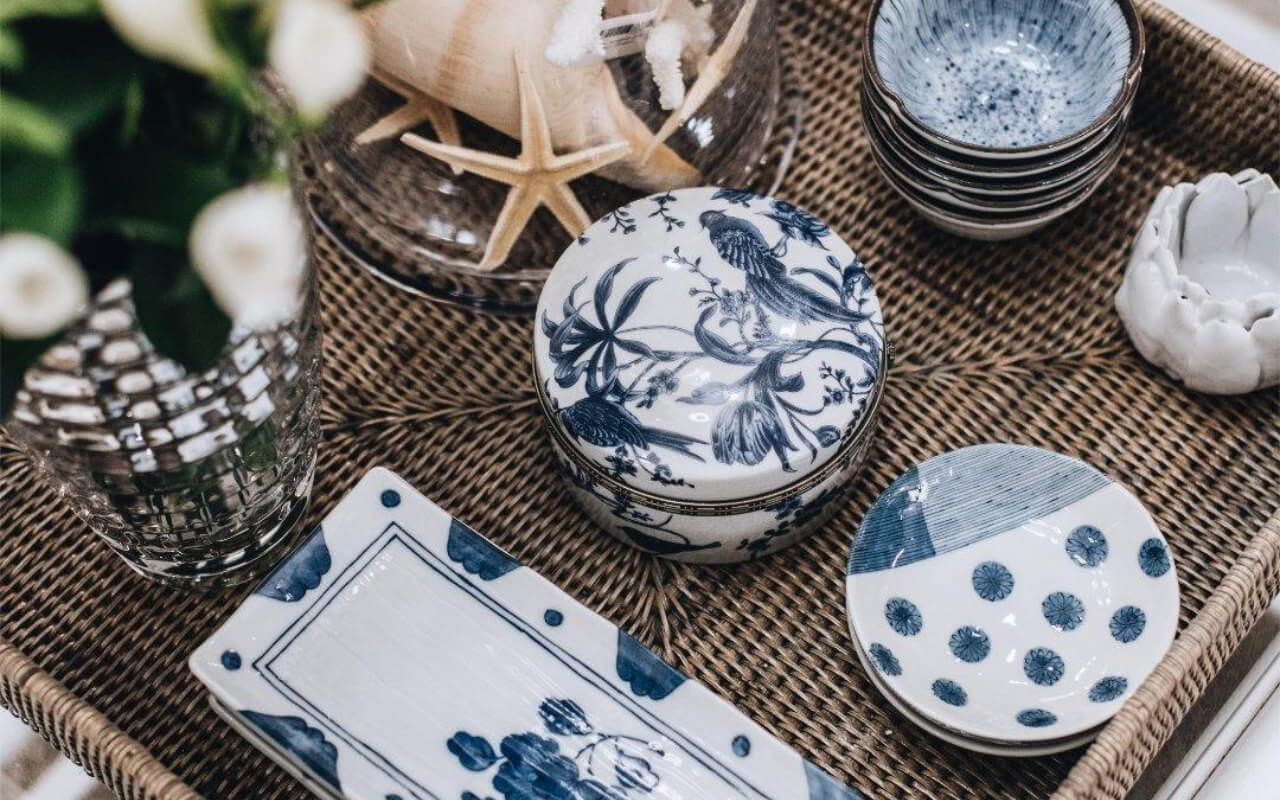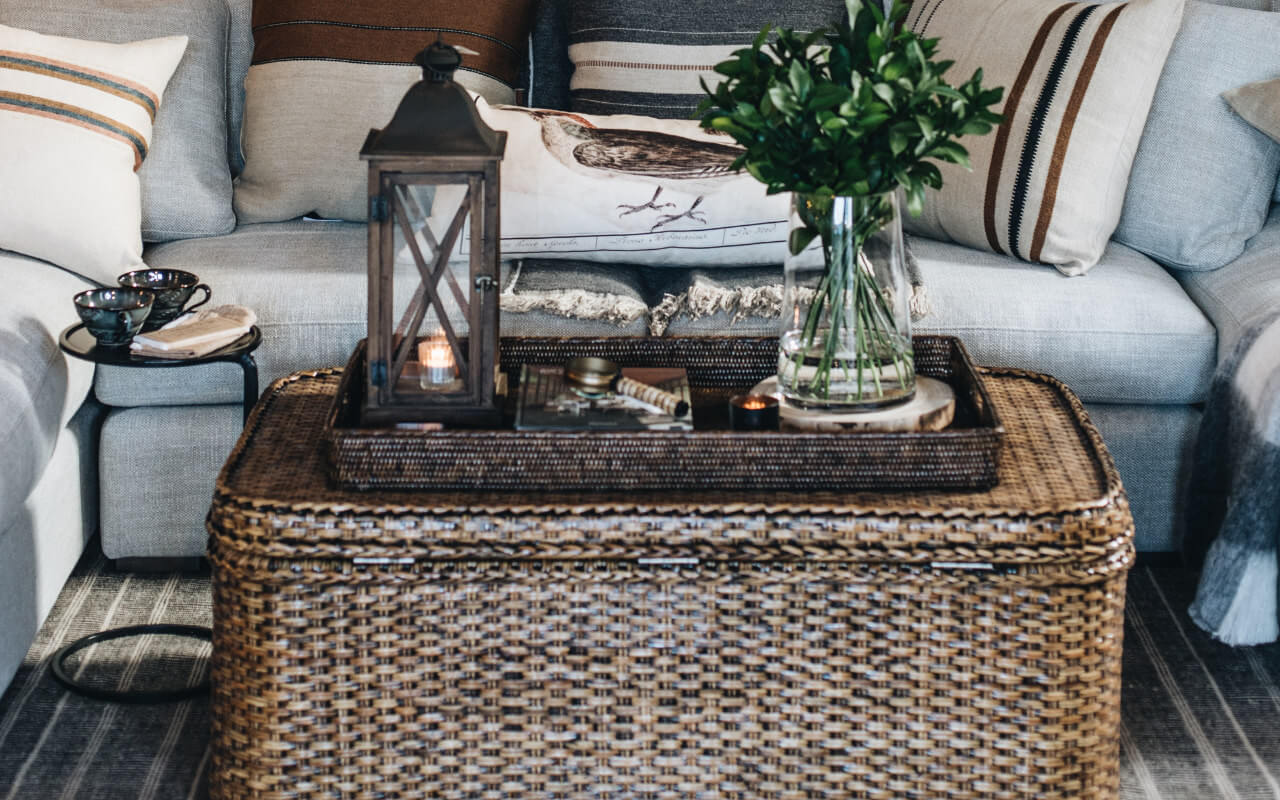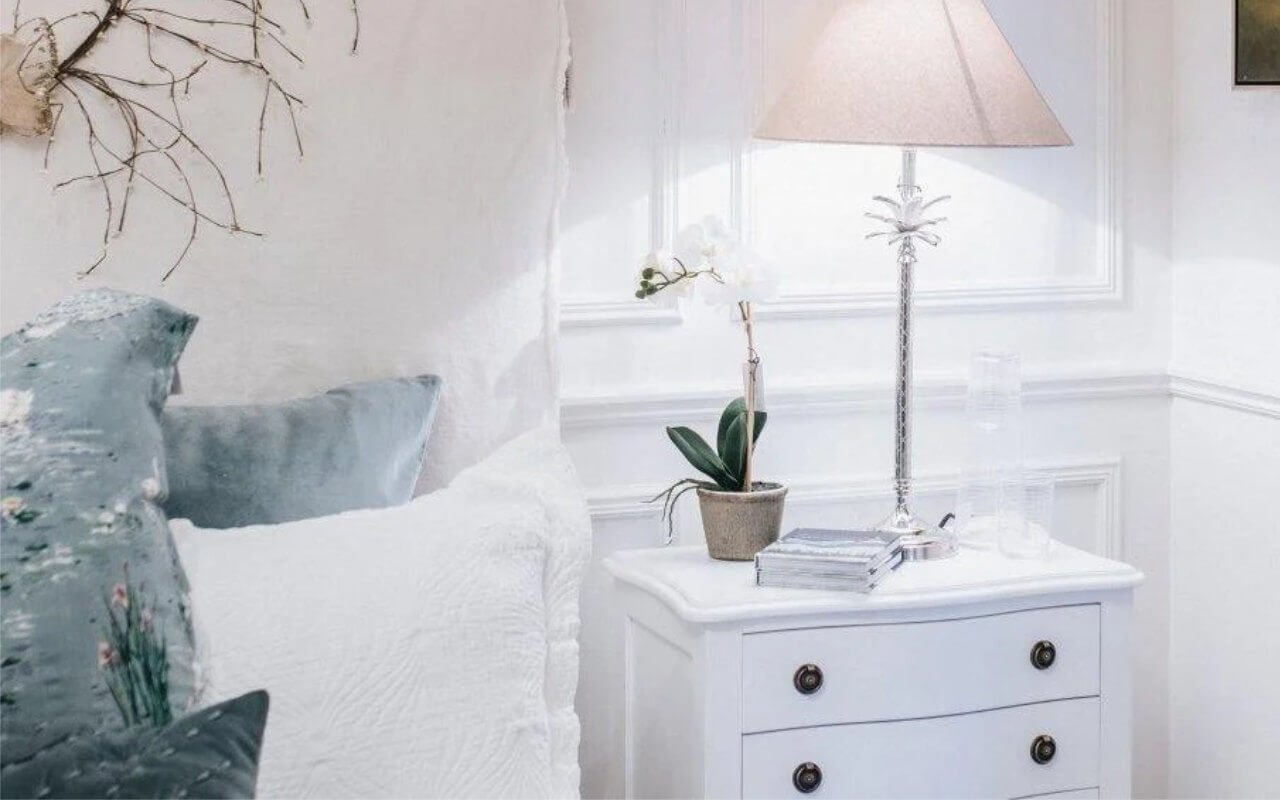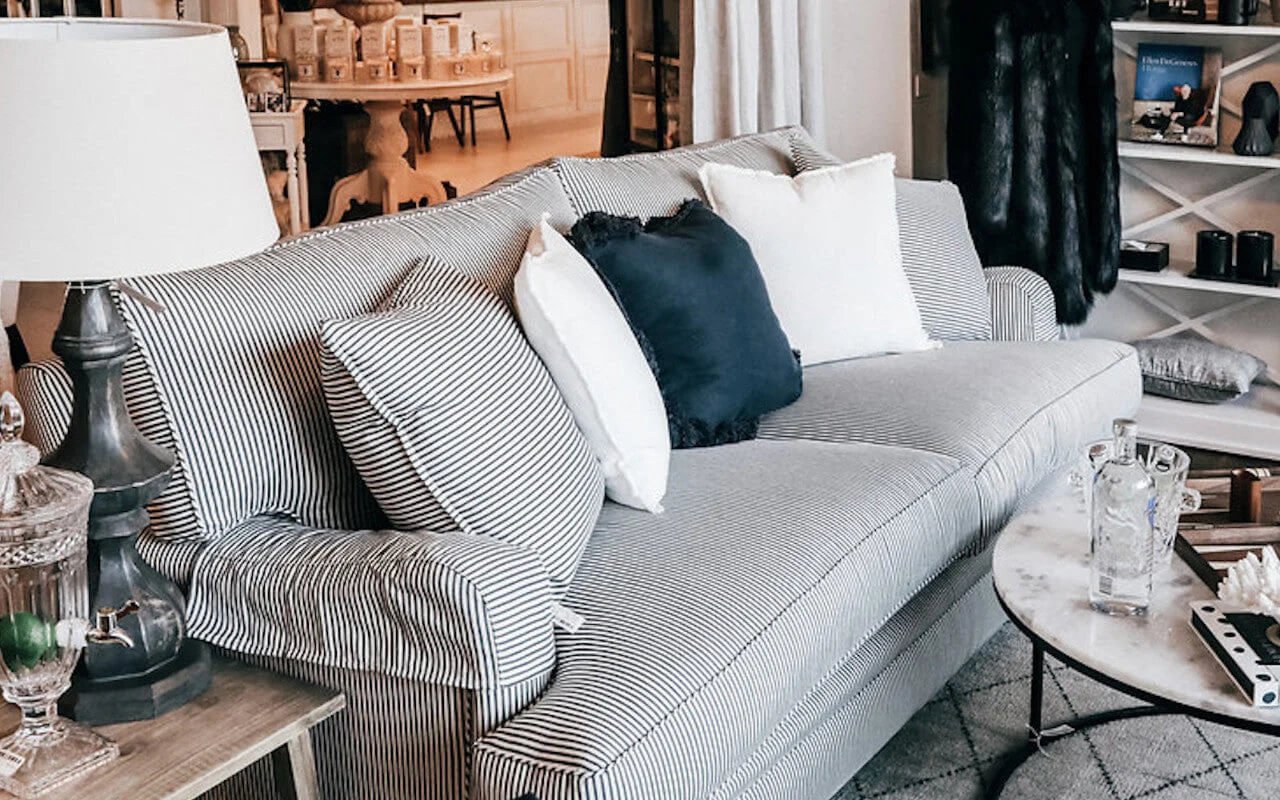Discover our essential rattan styling tips below to learn how to incorporate this environmentally friendly material in your own home.
Using organic materials in the home, such as rattan, cane, or wicker, adds a welcoming & natural feel that is at home in a Country, Coastal, or Urban environment.
Bringing the outdoors in through woven, raw, and repurposed materials gives the warmth of nature to any room and offers a timeless appeal. Today we are putting the spotlight on one of our most-loved and versatile materials, rattan, so you can discover the many ways in which you can incorporate this organic material into any room of the home.
A climbing vine-like species of palm, rattan is a fast-growing tropical plant that grows prolifically in Indonesia, the Philippines, and other areas of South East Asia.
"Rattan exudes laid-back elegance and an air of understated relaxation and is increasingly popular with
designers of today" - Rattan: A World of Elegance and Charm
Rattan Styling Tips: What is Rattan?
It grows in the shape of a pole that varies in size and is regarded as one of the strongest woods, growing as high as 30 metres. In its raw state, rattan takes on a yellowy tinge, so it is often finished in a dark brown, grey, or whitewash and can be painted to suit a variety of styles.
With over 600 different species, rattan has been a popular choice, not only for its beauty but because it is lightweight, durable, and flexible. Rattan is perfect for all seasons, and its versatility lends itself to interior and alfresco spaces.
Mixing rattan alongside plaid & wool cushions in cooler months brings a rustic warmth, whereas styling it amongst cotton and canvas provides a relaxed and cooling space in the warmer seasons due to its lightweight and breathable structure.
Rattan lightens the atmosphere of even the grandest architecture and is associated with exotic travel destinations to understated farmhouses, and is a perfect addition to counterbalance fine art and antiques.


Rattan Styling Tips: Wicker vs. Rattan
While Rattan and Wicker are often used interchangeably, the key difference is that rattan refers to the organic material itself, whereas wicker is an ancient technique of manufacturing that dates back to ancient Egyptian times.
Wicker involves the weaving of natural materials such as rush, willow, seagrass, reed, and rattan into furniture, baskets, and decorative items. More recently, wicker utilises synthetic materials and aluminum frames, which allow a longer life span due to greater resistance to the elements of sun, salt, and rain.
Often painted, wicker furniture or synthetic woven fibres are selected for external use as they are more resistant and less likely to rot when left in the elements for long periods.
The use of rattan in its own right only became popularised in the 17th and 18th centuries due to its extreme durability in hot climates, resistance to pests, and it's light-weight structure. It wasn't until the beginning of the 19th century that rattan began to adopt the Oriental and exotic design influences of the Regency period.
Rattan Styling Tips: Versatility
Rattan is exceptionally versatile in its use and style, both exuding glamour through its presence on wide stately porches and tropical verandahs, as seen with the infamous Peacock Chair throughout the homes of European Royalty, as well as reflecting an organic, understated beauty, seen within the home today. Rattan's malleability means it can be crafted into anything from furniture, baskets, light fixtures, trays, and decorative accents.
White-washed rattan pairs beautifully with coastal tones, whereas the cooler undertones of grey-washed rattan fit seamlessly within a minimal Belgian or Urban aesthetic. Lastly, the richness achieved through antique brown wash rattan brings warmth to country homes and can lend a more relaxed feel to formal Hamptons interiors.
To reinforce rattan's natural aesthetic, pair it with plenty of fresh greenery, floral or botanical prints, and other natural materials, such as linen, wood, jute, or wicker.
To keep it from looking flat, add contrasting elements in the form of reflective mirrored surfaces, glassware or pewter.
Layering rattan alongside these textural elements provides contrast which helps create unique and interesting spaces, providing visual richness throughout your home.
For inspiration, we are sharing our favourite ways to decorate with Rattan, with a nod to some other natural fibres such as Water Hyacinth, Seagrass & Jute.
Rattan Styling Tips: Bed, Bath & Living
Items to include:
Bedroom rattan: Bedside trays, Tissue boxes, Lamp bases, Coasters, Bedroom Chests, Storage Boxes & Tea-trays.
Living room decor: Small rattan trays, baskets, trinket boxes & light shades.
Bathroom Rattan: Cotton wool canisters, trio baskets for towels, laundry baskets, bins, small trays, and toilet roll holders.
Styling Ideas:
Focusing on Grouping: use rattan trays in the bedroom or living area to group decorative accents on the tray while simultaneously grounding the room and protecting surfaces.
Placing a rattan tray on an upholstered ottoman or glass surface both protects the surface and relaxes the space while allowing you to showcase your favourite decor.

Rattan Styling Tips: Dining & Tableware
Items to include:
Dining Tableware: Placemats, underplates, coasters, vases, candleholders, napkin holders, napkin rings, caddy's, cutlery trays, and serving ware.
Rattan Barware: Water jugs and dispensers, ice buckets, picnic baskets, bar trolleys, tumbler glasses, and butler trays.
Styling ideas:
When using rattan in your dining or entertaining space, less is more. Focus on adding 2-3 complementary pieces, such as an underplate, placemat, and caddy.
We recommend sticking with the same colourway of rattan for the table to keep the look streamlined and make it easier to select your complimentary tableware.
An exception to this is if you create contrast by pairing light or grey-washed rattan tableware with black or white-painted rattan furniture.
Rattan Styling Tips: Furniture
Items to include:
Bedroom Furniture: Rattan chests, bedsides, lamps, and beds.
Living Room: Side, coffee or console tables, trunks, foot-stools, occasional chairs, lighting, sculptural pieces, storage boxes & crates.
Home office: Desks, desk caddy's, chairs, and document or filing trays.
Dining: Dining chairs and tables, accent chairs, benches & barstools.
Rattan Lighting: Look for large pendants made from rattan, raffia, or wicker in sculptural shapes, or choose a fixture with an open weave pattern to spread light around the whole room.
Outdoor: Hanging chairs, planter boxes, rattan outdoor lounges and dining furniture, umbrella baskets, and coat racks.
SHOP THE COLLECTIONRattan Styling Tips: Calming & Rustic
Because you often see rattan, wicker, or cane used it in resorts and places that encourage relaxation, adding furniture pieces and storage solutions made from these natural fibres emulates that calming sense within the home.
We recommend steering away from any lacquered rattan as it tends to go yellow in the sun.
Beautiful benches and stools made from teak, cane, and rattan also make great accent pieces for foyers and living areas. We also recommend rattan storage trunks at the end of the bed to store blankets in the warmer months, which can also function as a coffee table.















